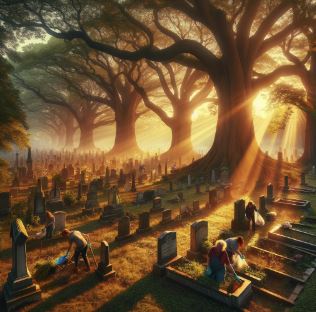Saturday, February 18, 2023
Duer Dilemmas
My long-time readers know my obsession with the Duer family. I've been good, though, and haven't blogged about them in almost two years. Honestly, I have not researched their lines since the pandemic was full throttle.
Last month I watched a Legacy Family Tree presentation by Elizabeth Shown Mills who is, lucky for us, back from retirement. The lecture gave numerous ideas on how to problem-solve using "trivial details." A comment she made resonated with me; there are going to be times that we will NEVER find a document that clearly establishes a relationship.
I'm one of those genealogists that believe that somewhere, somehow, that long-sought record will unveil itself and leave me with a happy ending. Too many Disney movies, I guess! The lecture made me come to my senses. It was time for me to resurrect, review, and re-analyze all of my Duer findings and move toward a conclusion.
Briefly, my 5th great grandfather, John Duer (1748-1831), died after my 4th great grandfather, Thomas Duer (1775-1829) so Thomas and his family were omitted from John's will. Another daughter of John's who had died early was also omitted, however, her only son was named in John's will. None of Thomas' children were named. Thomas had died intestate (of course). The family originated in New Jersey; only one document there ties John and Thomas together but doesn't state a relationship. That document was both men witnessing a will for a neighbor.
John is found in a deed in what is now West Virginia. He made the purchase in 1792 but didn't move until about 1797. By 1805 he was in Trumbull County, Ohio. As was Thomas. There is no deed for either John or Thomas in the early years in Ohio but they are on tax lists, next to each other. Property maps show them residing next to one another.
And that is all I have. Not!
Using what Mills discussed, I pulled out every document I had for both men and created a different timeline than I had previously done. This time I made 5 headings - Date, Event, Place, Source(s), and Name. I began with the earliest records I had for John. Some of the sources, I'll admit, are stinky like this for birth - http://familytreemaker.genealogy.com/users/b/e/a/Scott-C-Beal/GENE4-0004.html (no source) - though I recorded each as together, clues are provided. In the Name column, I recorded who was named in the record. The few that showed John and Thomas together I highlighted in pale green. I then went through Thomas's records and fit them into the same timeline in chronological order. This is where I realized there were many more connections between the two men - guardianship of Thomas' children, land sales among the surviving family members, and religious affiliation. I highlighted those in pale orange. Yes, it is an ugly color scheme but it does stand out.
I then wrote 9 pages of relationship proof. It also includes DNA. My plan is to share this with colleagues over the next few weeks for their insight. Possibly, I'll be publishing it, too. I may even approach a lineage society and complete an application.
My husband remarked, "So, you're now done with the Duers." I thought, "Is one ever done with a line?" You know the answer. No, in analyzing the John-Thomas information I noticed some very interesting (to me!) nuances. I decided to take on a major Duer surname study of the New York, Antigua, and possibly Connecticut lines in the hope of identifying their shared relative. Clearly, they all had a shared relationship both in the Caribbean and in the Colonies. It also involves John Duer's maternal grandfather, Daniel Hollingshead, who I have written extensively about. During the pandemic, I was able to find how Daniel, a Presbyterian, was related to the Quaker line. I was unable to understand his relationships with the New York Duers who married into the Alexander family, as Daniel did, but those Alexander families don't seem to connect, either. It is a convoluted mess! As you can see by the tree shown at the top of the page, every generation of every line has a John, Thomas, William, and Daniel. And, they intermarry. And, they don't leave a lot of records. And researchers confuse them, particularly the Ohio and Pennsylvania John's Revolutionary War Service. It's going to be fun to sort this all out so look forward to more blogs about my Duer Dilemma!
Subscribe to:
Post Comments (Atom)
Cemetery Weather
AI Generated Spring has sprung in the Midwest and last Saturday was the first cemetery walk of the year. The old cemetery in a small ...

-
Warm Days – Cool Nights Flowers Blooming - Birds Aflight I just love spring, don't you? It's a time of new growth, gentl...
-
AI Generated Brick Wall The answer is a definite maybe! Here's what I did with one of my brick walls and Chat GPT. This story revolves ...
-
I didn’t want to start the New Year on a sour note so I hesitated on writing this blog. I think it’s time to share my opinion of a trend ...



No comments:
Post a Comment